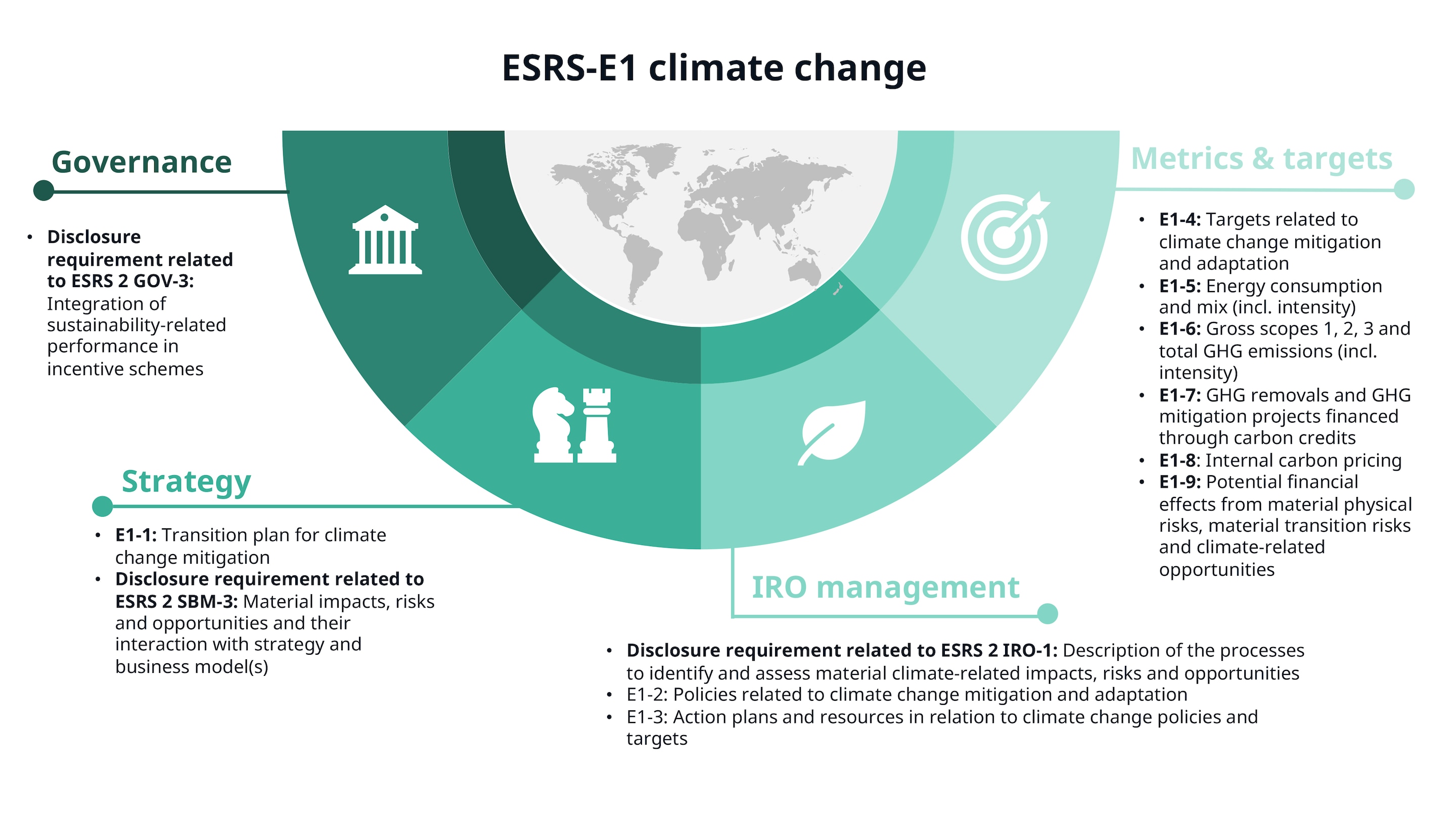Navigating the ESRS E1: Roadmap for climate change accountability
Visit BSI's Experts Corner: Home for insights from BSI’s practice directors and industry experts on Environmental, Health, Safety, Security, and Sustainability.
November 9, 2023 - The European Union's (EU) Corporate Sustainability Reporting Directive (CSRD) aims to embed sustainability into annual reporting, marking a new era for corporate environmental, social, and governance (ESG) disclosures. Organizations will soon find themselves navigating unfamiliar terrain and potentially challenging long-held reporting practices.
In BSI’s ongoing five-part online seminar and subsequent blog series surrounding this new directive, our sustainability experts delve into what this means for organizations everywhere, not just those that are based within the EU.
Part one, Navigating the CSRD: Applying the double materiality principles, addresses reporting in accordance with the European Sustainability Reporting Standards (ESRS) while navigating the double materiality principle. This second installment delves into the fundamentals of the ESRS E1 standard.
Unveiling the ESRS E1 climate change standard
This standard sets the stage for an organization to disclose its impacts on climate change, reflecting both positive and negative aspects, actual and potential consequences, and historical, present, and future actions to align with the Paris Agreement and limit global warming to 1.5°C.
Understanding climate change impact reporting
- Positive and negative impacts: The ESRS E1 standard demands transparency concerning the positive and negative consequences of a company's activities on climate change. This includes every aspect of operations, from energy consumption and emissions to product design and sourcing.
- Actual and potential impacts: Reporting goes beyond what's happening now; it extends to what might occur in the future. Organizations must anticipate and account for potential impacts, giving stakeholders a holistic view of their sustainability strategies.
- Historical, present, and future efforts: To gain a full understanding of a company's climate change efforts, the standard requires a historical perspective. What was done in the past, what is being doing now, and what are the future plans to tackle climate change?
The Paris Agreement and its role
The Paris Agreement, a landmark international treaty, aims to limit global warming to well below 2°C, with an ambition to keep it within 1.5°C. The ESRS E1 standard places a significant emphasis on aligning corporate sustainability goals with these objectives. It's not just about acknowledging the accord; it's about illustrating how your company is actively contributing to achieving its goals.
Developing a transition plan
One of the most notable aspects of the ESRS E1 standard is the requirement to outline a transition plan for climate change mitigation. This plan goes beyond acknowledging climate change's importance; it's a strategic roadmap for making a difference. It should encompass:
- The types and extent of the company's material risks and opportunities arising from the company's impacts and dependencies on climate change and how the company manages them.
- The financial effects on the business over the short-, medium-, and long-term of the risks and opportunities arising from its dependencies and impacts on climate change.
- The company's plans and ability to adjust its business model(s) in line with the transition towards a sustainable economy and to help limit global warming to 1.5°C.
- The methods and actions your company plans to implement to achieve these goals.
- Timelines for implementing these measures, ensuring transparency in your sustainability initiatives.
- A robust approach to monitoring and reporting progress, emphasizing your dedication to continuous improvement.

Why the ESRS E1 standard matters
The ESRS E1 standard is not just another box to check; it's a powerful tool for shaping a more sustainable future. Here's why it matters:
- It fosters a culture of transparency and accountability, showcasing your commitment to sustainability. By providing a detailed account of your climate change impacts and mitigation strategies, you build trust with stakeholders. Note that the Standard E1 should be read in conjunction with ESRS 1 General Requirements and ESRS 2 General Disclosures
- Understanding and addressing climate change is essential for business resilience. Companies that proactively manage climate-related risks are better positioned to adapt to a changing world.
- Embracing the ESRS E1 standard can be a competitive advantage. Investors, customers, and partners are increasingly looking for companies that are actively addressing climate change.
A clear transition plan for climate change mitigation positions your company for long-term sustainability. It's not just about meeting today's requirements; it's about future-proofing your business.
As we navigate the changing landscape of corporate sustainability reporting, the ESRS E1 standard becomes a crucial guidepost. It empowers companies to embrace transparency, accountability, and sustainability, shaping a more resilient and responsible future.
Download the full Navigating the ESRS E1: Roadmap for climate change accountability webinar and look for part three of this series, EU CSRD webinar #3: Own workers and upstream workers, as BSI’s sustainability experts address managing the environmental and social effects of organizational operations, particularly concerning employees and workers within the value chain.
Read more from other BSI sustainability experts in ESG compliance: Navigating sustainability-related regulations, California’s latest climate disclosure bills (SB 253 and SB261), TCFD: Beyond regulatory compliance, and LCA and its role in sustainability. Follow along with more sustainability-focused content and other digital trust, EHS, and supply chain topics that should be at the top of your list at BSI’s Experts Corner.





